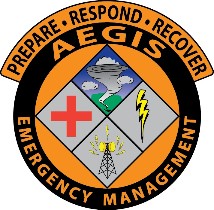

A NEW TAKE ON FIRST RESPONDER SAFETY
It’s not hard to picture the scene: A building has collapsed in the business district of a major metropolitan area. There are (unconfirmed) reports of an explosion, along with definite reports of many casualties as well as active fire. Emergency responders converge on the area. Police, fire, and emergency medical vehicles are all Code 3, but as they near the scene they are forced to slow their response. The congestion – traffic and pedestrian – is substantial as people from near the scene of the collapse try to get away; and others further away attempt to get closer for a better look.
Pulling a small child with one hand, and pushing a baby stroller with the other, a distressed and frightened mother steps out from the curb directly into the path of a responding ambulance. The ambulance screeches to a halt, and while both crew members are staring at the woman and children that they almost ran over, two men break from the other side of the street. Dressed just like everyone else, no one pays them any attention. One of the men pulls open the passenger door, and using a silenced pistol, shoots both medics. It’s over in seconds. The crew never even saw their attackers approach; and, they did not have time to make an emergency call or even to press the panic button on their radios. No one on the crowded street notices - their attention being riveted by the clouds of smoke and dust just a few blocks away and their senses overwhelmed by the wailing of sirens, clamor, and general chaos. The ambulance is then driven to a nearby apartment building where the bodies of the crew are placed in the back of the vehicle along with the explosives that have been stockpiled there for just this attack. It all takes less than 20 minutes.
The ambulance, with its new crew and cargo, then proceeds to the disaster scene. They know right where it is because they, like the woman who stepped into the path of the ambulance in the first place, are part of the terror cell that planned it. They have planted the bomb that caused the building collapse, and are now preparing the second wave of their attack. No one stops the in-route ambulance now driven by one of the attackers. In fact, because it is an authentic emergency vehicle, it easily passes through established security checkpoints and proceeds toward the heart of the disaster. Once they can go no farther, or once they find themselves in a suitable crowd of either onlookers or first responders (like near the Incident Command Post or one of the staging areas), the terrorists detonate the explosives concealed in the patient compartment of the ambulance. The blast kills and injures additional first responders and civilians, and mangles much of the on-the-scene police, fire, and EMS equipment. Or maybe they head away from the scene. After all, with everything going on, what school (or apartment building, or high-rise office complex, or train station, or hospital) would immediately equate the arrival of an emergency vehicle with an imminent threat? Would you . . . ?

With the recent atrocities in Paris, France and San Bernardino, California still fresh in everyone’s mind, it’s obvious the threat does not need to be from explosives. In the scenario we described above, suppose that – instead of placing a bomb in the ambulance – the terrorists simply load it up with other heavily armed terrorists. Sounds pretty far-fetched, right? Sure it does. Who in their right mind would hijack an ambulance and use it as a weapon? I don’t know the answer to that. Who in their right mind would hijack an airliner and use it as a weapon? Sadly, we all know the answer to that. Even “remote possibilities” remain possibilities, and they only remain remote until they happen.
Along with law enforcement officers and firefighters, EMS personnel are increasingly becoming the target of violence while on duty.Sometimes it’s a combative patient, or a patient suffering from a mental illness or under the influence of drugs. Other times, they are attacked because as public servants they are seen as part of “the system” that some perceive as unfair, biased, or repressive. Locally, there have been instances of patients who, having been administered naloxone (Narcan® and others) after overdosing on heroin, come out of their drug-induced comatose state and attack the medic who just saved their life. Why? The naloxone took away their “high,” and they paid good money for that high.

With the recent atrocities in Paris, France and San Bernardino, California still fresh in everyone’s mind, it’s obvious the threat does not need to be from explosives. In the scenario we described above, suppose that – instead of placing a bomb in the ambulance – the terrorists simply load it up with other heavily armed terrorists. Sounds pretty far-fetched, right? Sure it does. Who in their right mind would hijack an ambulance and use it as a weapon? I don’t know the answer to that. Who in their right mind would hijack an airliner and use it as a weapon? Sadly, we all know the answer to that. Even “remote possibilities” remain possibilities, and they only remain remote until they happen.
Along with law enforcement officers and firefighters, EMS personnel are increasingly becoming the target of violence while on duty.Sometimes it’s a combative patient, or a patient suffering from a mental illness or under the influence of drugs. Other times, they are attacked because as public servants they are seen as part of “the system” that some perceive as unfair, biased, or repressive. Locally, there have been instances of patients who, having been administered naloxone (Narcan® and others) after overdosing on heroin, come out of their drug-induced comatose state and attack the medic who just saved their life. Why? The naloxone took away their “high,” and they paid good money for that high.
But we are not talking about those types of attacks, dangerous though they are. Here we are referring to the intentional targeting of an ambulance and crew as part of an overall plan – as a means to an end. Who among us is trained to view a responding emergency vehicle as a potential threat? If you are working an active scene, you’re probably happy to see the arrival of medical response personnel. Surrounded by victims of the attack, the last thing you’d want to do is delay response by adding additional layers of security through which they must be cleared. And EMS crews may be particularly vulnerable. Cops are armed, and fire equipment is usually manned by more than two people in or on different areas of the apparatus. Both conditions make the swift and silent elimination of the occupants difficult.
It has happened before.In March of 2002, the search of a Palestinian Red Crescent (the equivalent of the International Red Cross) ambulance turned up two wanted terrorist suspects and the explosive-laden vest they had hidden beneath a stretcher in the patient compartment. And throughout the late 1990’s there were numerous reports of Palestinian ambulances being used to transport armed fighters from “safe” areas to firefights or being used to carry munitions.
Situational awareness on the part of responding crews, accountability of and for personnel and equipment (even while they are in-route to the scene), physical security measures for personnel and equipment, duress codes, emergency transponder devices – all play a larger role as our enemies ramp up activity and fine-tune their tactics. We know those enemies are relentless. We know they constantly experiment with new tactics, materials, devices and scenarios. We know that when they find something that works they immediately try to export it to other theaters of operation. We should be preparing for this now.
 Jim Sharp, Vice President and Chief Training Officer with Aegis Emergency Management, is a 30-year veteran of the emergency response and emergency management professions and a highly-sought trainer and presenter. An experienced Incident Commander and Emergency Operations Center Manager, Jim is a certified Professional Continuity Practitioner and Respiratory Protection Program Manager for incidents involving weapons of mass destruction. Prior to starting his own firm in 2010, he spent the immediately previous 10 years with an Illinois jurisdiction working his way through the ranks (from officer through corporal, sergeant, and lieutenant) and holding positions as their Emergency Management Agency's Field Training Officer, Public Information Officer, and Assistant Coordinator (equivalent to Deputy Chief). Jim has trained literally thousands of people – civilians and first responders - on topics that include severe weather safety, continuity of operations, CERT, pandemic preparedness, incident command, the National Incident Management System, and many more.
Jim Sharp, Vice President and Chief Training Officer with Aegis Emergency Management, is a 30-year veteran of the emergency response and emergency management professions and a highly-sought trainer and presenter. An experienced Incident Commander and Emergency Operations Center Manager, Jim is a certified Professional Continuity Practitioner and Respiratory Protection Program Manager for incidents involving weapons of mass destruction. Prior to starting his own firm in 2010, he spent the immediately previous 10 years with an Illinois jurisdiction working his way through the ranks (from officer through corporal, sergeant, and lieutenant) and holding positions as their Emergency Management Agency's Field Training Officer, Public Information Officer, and Assistant Coordinator (equivalent to Deputy Chief). Jim has trained literally thousands of people – civilians and first responders - on topics that include severe weather safety, continuity of operations, CERT, pandemic preparedness, incident command, the National Incident Management System, and many more.
It has happened before.In March of 2002, the search of a Palestinian Red Crescent (the equivalent of the International Red Cross) ambulance turned up two wanted terrorist suspects and the explosive-laden vest they had hidden beneath a stretcher in the patient compartment. And throughout the late 1990’s there were numerous reports of Palestinian ambulances being used to transport armed fighters from “safe” areas to firefights or being used to carry munitions.
Situational awareness on the part of responding crews, accountability of and for personnel and equipment (even while they are in-route to the scene), physical security measures for personnel and equipment, duress codes, emergency transponder devices – all play a larger role as our enemies ramp up activity and fine-tune their tactics. We know those enemies are relentless. We know they constantly experiment with new tactics, materials, devices and scenarios. We know that when they find something that works they immediately try to export it to other theaters of operation. We should be preparing for this now.









